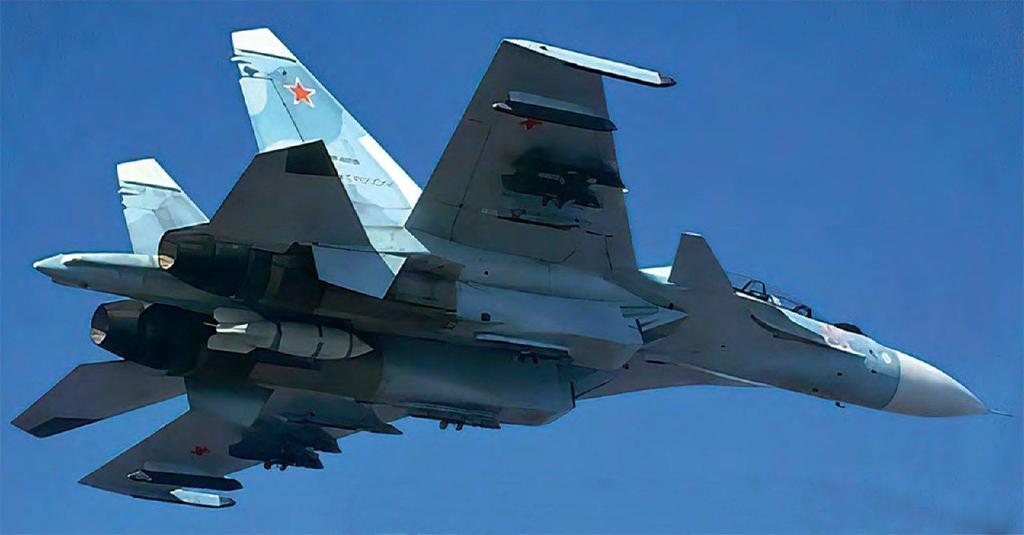Russia has reportedly developed an advanced simulator for ground nuclear explosions, engineered to offer a visual simulation of key optical indicators, including the impact effect, light flash, and mushroom dust cloud resulting from a terrestrial nuclear explosion.
Russian scientists at the Military Academy of Logistics, named after General of the Army A.V. Khrulev, have developed a cutting-edge simulator for ground nuclear explosions, according to the State-run media agency TASS.
This recently patented simulator is designed to revolutionize the training of military units, particularly those within the ground forces, for combat operations in environments involving nuclear weapons.
The patent describes the simulator’s primary objective as providing a realistic visual representation of critical elements associated with a terrestrial nuclear explosion, including impact effects, a dazzling light flash, and the iconic mushroom dust cloud.
The technology is poised to be integrated into military unit exercises and hands-on training sessions. This holds the potential to substantially improve the readiness of Ground Forces for engagements in nuclear weapon scenarios.

Furthermore, the simulator’s application extends to units specializing in radiation, chemical, and biological ground reconnaissance.
The report suggests that it will play a vital role in refining the abilities of these units, assisting in determining explosion parameters, and enabling the precise identification of the epicenter.
The patent documentation highlights that the new simulator addresses the limitations of its predecessor, the IU-59 nuclear explosion simulator, which has become obsolete and is no longer in production.
Existing IU-59 samples in military warehouses have also reached the end of their technical lifespan, rendering them unsuitable for operational use.
Furthermore, the patent document sheds light on another previously considered alternative, the IAB-500 imitation bomb, designed for front-line aviation.
However, this option was deemed impractical due to its limited scope and the significant economic challenges associated with its usage for training military units in radiation, chemical, and biological reconnaissance.
“In addition, the IAB-500 model was withdrawn from service in 1984 and is no longer produced by industrial enterprises,” the report says.
Russia’s Nuclear Readiness
Moscow’s unveiling of an advanced simulator for ground nuclear explosions has taken place against the backdrop of heightened tensions with the United States-led NATO.
This comes days after Russia dismissed a US proposal to resume nuclear arms control talks, citing the challenging environment created by the US’s ongoing support for Ukraine.
Foreign Minister Sergey Lavrov deemed the proposal to restart negotiations as “unacceptable,” emphasizing the necessity for Washington to reassess its stance on Russia’s conflict with Ukraine before any meaningful discussions can take place.
The disagreement over renewed talks raises concerns about a potential new arms race, especially as the New START treaty, inked by former Presidents Barack Obama and Dmitry Medvedev in 2010, is scheduled to expire in 2026.
The treaty places constraints on US and Russian nuclear weapons while allowing on-site inspections to verify compliance. However, these inspections were halted in 2020 due to the COVID-19 pandemic and have yet to resume.
Last February, Russian President Vladimir Putin suspended Russia’s participation in the START treaty, citing perceived “hypocrisy and cynicism” from the US and NATO regarding their support for Ukraine.
As the Biden administration continues its unwavering support for Ukraine, allocating billions in aid, it faces opposition from some Republicans in Congress who demand a linkage between foreign aid and stricter border policies.
Meanwhile, the introduction of the ground nuclear explosion simulator signifies a significant enhancement in the training of Russian soldiers for combat operations in nuclear weapon scenarios.
Against the backdrop of the ongoing conflict with Ukraine, Moscow has been showcasing the preparedness of its nuclear forces.
In October 2023, Russia conducted a “massive” retaliatory nuclear strike drills involving missile launches from land-based silos, a nuclear submarine, and long-range bomber aircraft, all overseen by President Vladimir Putin.
The drills aimed to practice responding to a hypothetical enemy-initiated nuclear strike, showcasing Russia’s strategic offensive capabilities.
On the other hand, a leading Western think tank, the International Institute for Strategic Studies (IISS), has observed that the ongoing war in Ukraine has undermined Russia’s confidence in its conventional military capabilities.
This shift in perception has elevated the significance of non-strategic nuclear weapons (NSNWs) for Moscow, emerging as a key strategy to both deter and counter NATO in potential future conflicts.
- Contact the author at ashishmichel(at)gmail.com
- Follow EurAsian Times on Google News